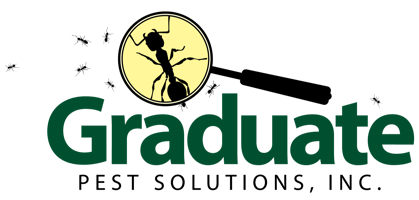When you think of green pest control, you likely imagine natural products. Sustainable and safe. While that’s true of some of the treatments we do for residents of Western Massachusetts and Northern Connecticut like Springfield, Hartford, and Windsor Locks, it represents only a fraction of the solutions we offer when we care for your home. It’s not all about what green product to choose but what condition(s) are contributing to the problem and what can be corrected so that the material choice is also the last choice whether green or traditional. If conditions conducive to a pest infestation can be corrected, you will naturally need less or perhaps no material application. Corrective actions applied through a multi-method approach is known as Integrated Pest Management or IPM.
What is Integrated Pest Management (IPM)?
IPM is a holistic pest management practice. Instead of simply treating infestations with a spray or bug bomb, we apply IPM with five major components: inspection, identification, recommendations, treatment, and follow-up. The practical application of IPM varies from home to home. With a mindset of problem-solving pest issues without first reaching for a can of spray, we can minimize material usage and look to correct pest infestations and prevent future infestations. If a mouse problem can be solved by repairing foundation gaps, we start there. If a leak is causing excess moisture that is attracting pests, we identify and recommend a repair.
A Cursory List of Green Pest Control Methods That Qualify as IPM
- Emptying trash containers frequently and keeping them clean, including outdoor trash bins
- Emptying sink strainers and running the garbage disposal frequently to prevent food build up in the drain area
- Cleaning food particles and grease from kitchen appliances (toasters, ovens, microwaves, ovens, stoves and refrigerators)
- Storing food in sturdy re-sealable containers including
- Storing food products in plastic snap-lid containers or kept in the refrigerator
- Vacuuming and sweeping floors and furniture, and cleaning food storage areas and shelves regularly, where pests may be harboring
- Cleaning behind and beneath the refrigerator and stove regularly
- In multi-family buildings, seal gaps around plumbing, wall outlets and switch plates to prevent pests from migrating from infested units to others
- Screening windows and doors
- Caulking cracks and gaps in and around the structure to keep pests from invading from outdoors
- Keeping branches and shrubbery well-trimmed and away from the structure
- Removing old tires or other open containers around the property that create standing water and provide a breeding ground for pests
- Stacking firewood, lumber, project “leftovers” and mulch piles away from the foundation of the structure to deter termites, mice, and ants
- Maintenance and upkeep of the structure’s foundation including downspout and gutter management
Good pest management starts with prevention. We focus on stopping a pest problem before it becomes one.
Find out how our prevention plans stop issues before they start. Call us at 413-566-8222 or contact us with any questions or if you are experiencing a pest problem. We have the knowledge and the services necessary to help keep your home pest-free!
YOU MAY ALSO LIKE
These related articles

